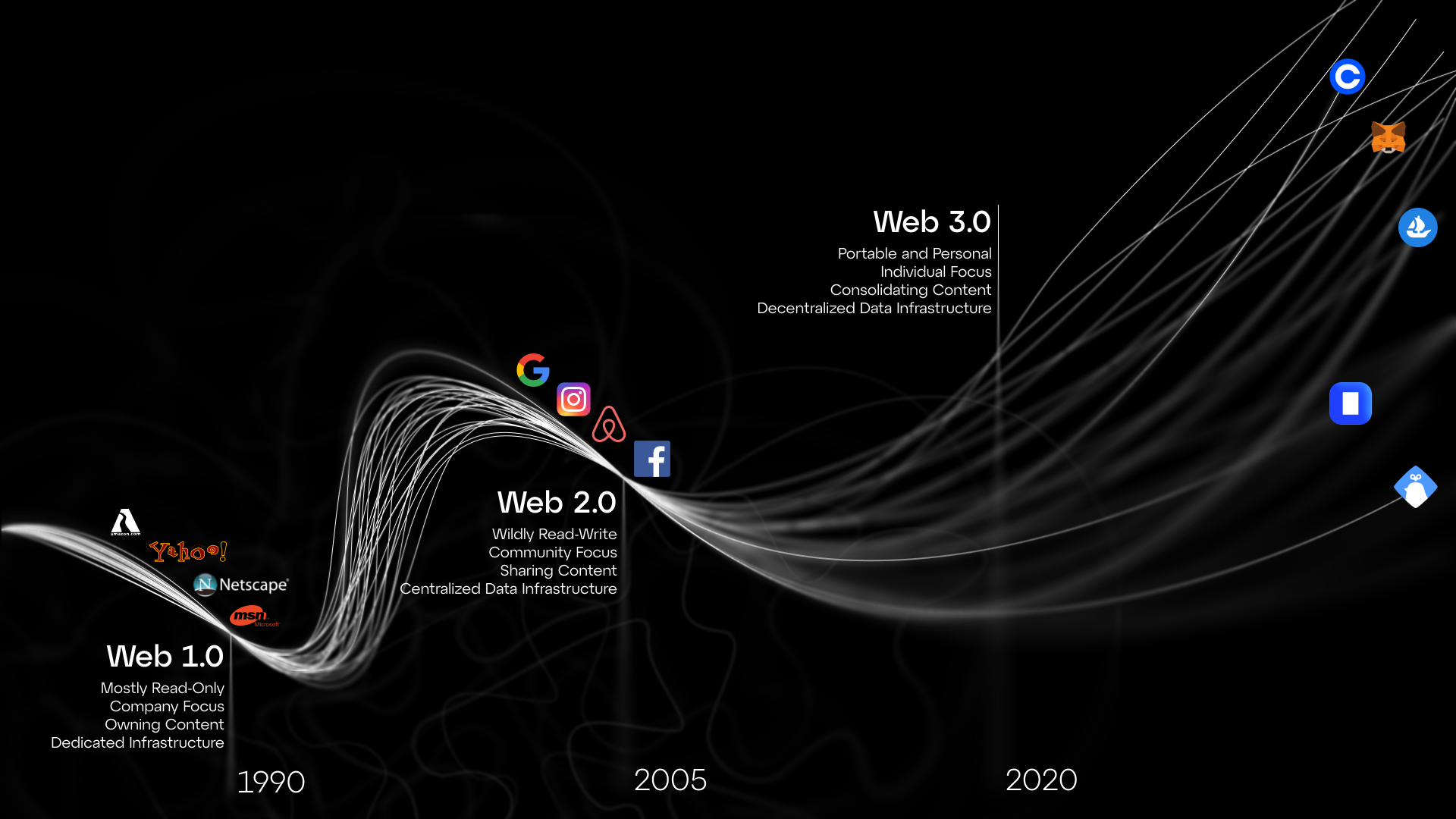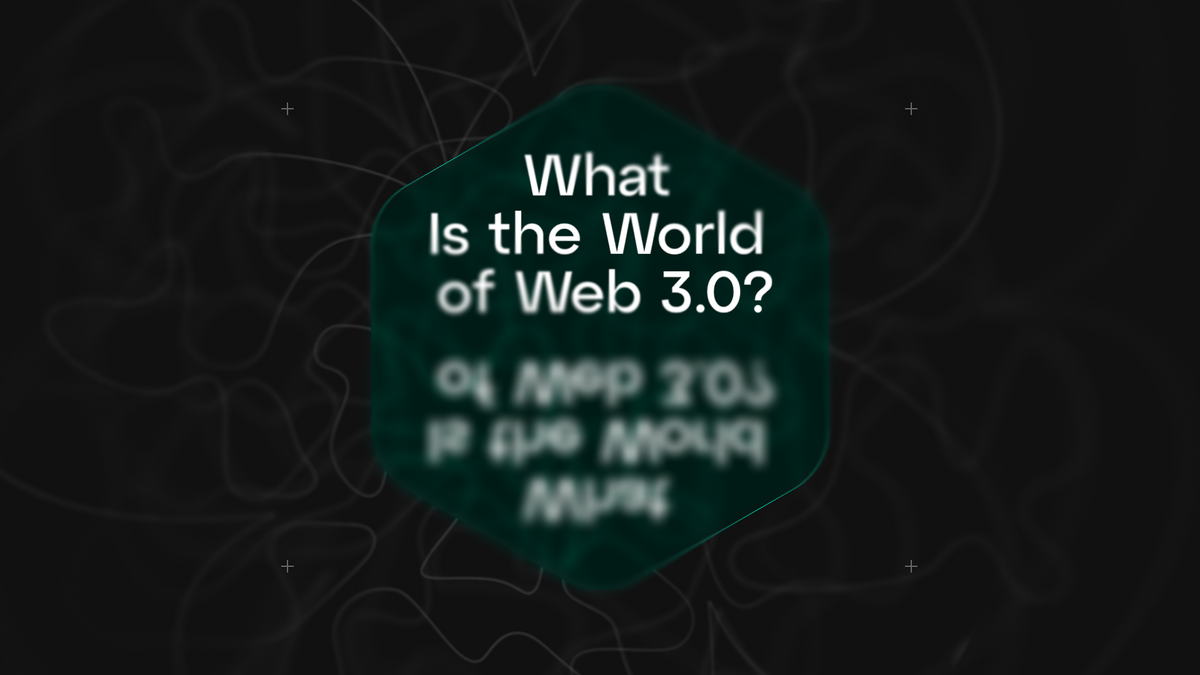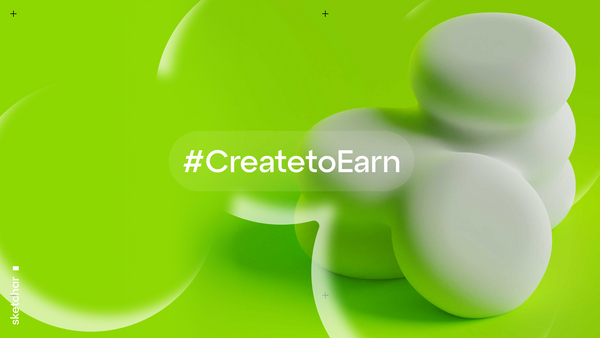Web 3.0 is a concept for a new version of the internet built on blockchain, which incorporates token-based economics and decentralization approaches. The idea formulated in 2014 gained traction last year from crypto enthusiasts and creators. Web 3.0 is essentially a method by which people can interact and trade with each other without the need for trust, using blockchain technology.
Web 3.0 will continue to attract interest due to the rise of crypto and blockchain-based assets, such as NFTs and others. Those digital assets are finding their way into common culture, whether in the form of fan tokens, which share ownership of digital influence over sports teams, or other assets, which allow early access to music released by bands, for instance. Fan tokens are a good example of monetization that could become the future courtesy of Web 3.0: they offer supporters of sports clubs the chance to own influence through a token but also benefit from exclusive content and the like. Art is another area where digital assets have transformed the market; artist Beeple sold his work (a jpeg file of a digital collage with 5,000 daily images made over 13 years from May 1, 2007) as an NFT for over $69 million at the start of 2021, despite there being no actual piece to hang upon the purchaser's wall. Instead, the blockchain denoted ownership, and whilst that wasn't the first example of such a transaction, the staggering sums involved ensured it raised the profile significantly. These are real-world examples of blockchain-backed assets impacting common people; whilst that happens, a fairer way to manage content creation will always appeal.
The real difference will come for everyday content creators looking to make a living online. Web 3.0 will revolutionize their monetization options and help put the power of digital assets into the hands of those that deserve it most – creators.
Difference between Web 1.0, Web 2.0, and Web 3.0
To break it down, if you search for a webpage that’s more than 10 or 15 years old, you might get a rather bland and basic-looking version of that page; news sites from pre-2010 tend to have such appearance. That’s a reflection of Web 1.0. Web 2.0 is the internet as we know it now; fully interactive, boosted by the ease of social connectivity and user-generated content. Web 3.0 is the idea behind the next phase of the evolution of the internet: constructed upon the concepts of decentralization, greater user utility, and openness.

Why Web 3.0 matters?
Essentially, Web 3.0, or web3 as it’s sometimes stylized, could be viewed as the answer to abuse of power within Web 2.0. It holds decentralization at its core, taking away controls from the big tech companies and giving data possession back to end-users. So for example, NFTs offer possibilities for Decentralized Autonomous Organizations (DAOs) with community-built ownership models. They have no hierarchical structure and every member gets an opportunity to propose ideas and shape policy. The technological infrastructure to make this happen already exists: the blockchain will see the dawn of a new internet based on fairness.
Data monetization would no longer be something that could easily be exploited, which would mean a loss of revenue for many, so don’t expect some companies to welcome Web 3.0 without a fight.
Blockchain is a much more secure method of trading and doing business, as it relies on an infallible digital ledger that can’t be tampered with. It’s a system of recording information in a way that makes it difficult or impossible to change, hack, or cheat the system. It's quick and easy too; transactions don’t have a middleman, such as a bank or payment facility, taking their cut. Therefore, a creator can sell their product to someone and receive the amount, immediately, in a transaction free from the risk of fraud. One advantage to buyers, but not the traditional banking establishment, is those transactions are direct and largely anonymous. Huge sums of money can change hands, in the form of cryptocurrency, in a completely safe and anonymous environment.
Web 3.0 for artists
To see how Web 3.0 will work for creators, it’s important to refer to the founding executive editor of Wired magazine, Kevin Kelly. Kelly is also an author who consulted on the Hollywood movie Minority Report by Steven Spielberg, and his excellent monetization essay, 1000 True Fans, outlines his vision of the future enabled by Web 3.0. He hypothesizes that the internet will allow people to make a healthy living, say €100 thousand per year, just by having 1000 true fans willing to invest up to €100 per year. That’s possible now, through providers such as Patreon, but they take a slice of the action. In Web 3.0, the content provider could deal directly with their userbase through tokens, in the same manner, football clubs have by using the fan tokens mentioned earlier. That token could also increase in value, making it a better model for long-term monetization than a patron system, where the ‘fan’ simply places money in and never sees potential returns.
Of course, the long-term benefits for artists are innumerable and include the possibility for the right set of audiences, authenticity and more protected status of their digital artwork, plus resale royalties. Obviously, there’re some aspects to overcome, such as people placing other individuals’ art for sale as their own, but those issues are minor when compared to the general value the Web 3.0 ecosystem could offer. This eventually will make art more democratic and lead to more people being able to live off their creativity.
Written by J Alderson



